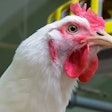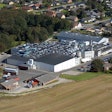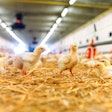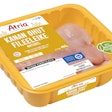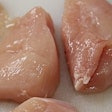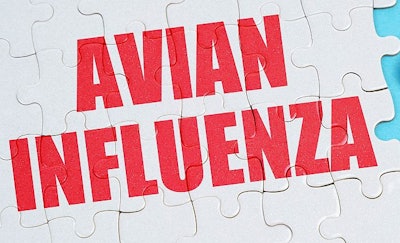
With the first doses were administered to farmed ducks in early October, France has become the first country in the European Union to use vaccination to protect poultry against highly pathogenic avian influenza (HPAI).
In a first for the country and for the world, an HPAI vaccination program for farmed ducks began in France earlier this week, according to the agriculture ministry.
Following three successive years of HPAI crises, the French agriculture minister committed to establishing a vaccination program for this most at-risk poultry group at the end of last year.
Over the 2023-2024 campaign period, up to 64 million ducks will be vaccinated on 2,700 farms across the country (except Corsica). Vaccination will be mandatory for all flocks of 250 or more ducks of the Barbary, Pekin or mule types whose meat or foie-gras products are sold commercially.
Aims of the vaccination program are to provide better protection for both animal and human health in the face of repeated threats from HPAI epizootics.
First vaccinations were carried out in the southwestern departments of Landes and Gers, and were attended by agriculture minister Marc Fesneau.
The minister has previously announced that, of the total campaign cost estimated at around EUR100 million (US$105 million), the state will cover 85%.
Vaccination: one element of disease control
Despite the current vaccination program for ducks, the minster has repeated its call for all poultry owners to maintain biosecurity measures to protect their birds from possible infections. Furthermore, nationwide surveillance programs will continue.
According to figures from the ministry, 402 outbreaks were confirmed in French poultry during the most recent outbreak wave (2022-2023), resulting in the culling of 10 million birds. During the previous season (2021-2022), 22 million poultry were culled as a result of 1,378 outbreaks.
Hailing the successful start of the program, Minister Fesneau said “Thanks to tremendous collective mobilization, France will be the first country in the European Union to vaccinate against avian influenza. And the first country in the world to vaccinate according to a protocol guaranteeing rigorous traceability and close monitoring of vaccinated animals.”
However, the French vaccination program has impacted European poultry trade.
Even before the first dose was administered to a single French duck, the U.S. announced trade restrictions on some European poultry.
Europe’s poultry owners urged to protect birds from wild species
As the autumn/fall migration of wild birds gets underway, protection of poultry and other farm animals from these winter visitors must be a top priority.
This is according to the latest assessment of the HPAI situation from the European Food Safety Authority (EFSA).
EFSA notes that the HPAI situation in poultry eased during the summer months. However, 25 outbreaks in domestic poultry and 482 in wild birds were confirmed in 21 European states over the period June 24-September 1. Most of the poultry outbreaks were in the United Kingdom, while colony-breeding seabirds were the most affected wild group.
Already, there have been more outbreaks in wild birds across Europe than in the previous season.
Furthermore, mammals at 26 fur farms in Finland have tested positive for the H5N1 HPAI virus in recent months. According to EFSA, the most likely source of infection at the farms is contact with seagulls.
So far in Europe, cases of influenza of the H5 have been rare in humans.
New HPAI outbreaks in backyard poultry
According to the latest notifications to the World Organisation for Animal Health (WOAH), domestic birds have recently tested positive for HPAI virus in Denmark and the Faroe Islands.
For Denmark, detection of the H5N1 virus serotype marked the end of a two-month hiatus from infection.
Some of the 30 birds of a backyard flock were found to be infected after five died at the end of September. The premises was in Guldborgsund, a municipality on the island of Lolland in the Zealand region.
For the Faeroe Islands, an H5 virus was detected for the first time at around the same time. Around half of the 37 birds in a backyard flock died. Source of infection in this case is suspected to be contact with wild species.
An island group in the North Atlantic Ocean, the Faeroes are an autonomous territory of Denmark.
Further HPAI cases detected in Europe’s wild species
For the first time, the H5N5 HPAI virus serotype has been detected in Iceland. According to official notifications to WOAH, an eagle and a wild goose found dead have tested positive for this virus variant since mid-September.
In Norway, the number of birds testing positive for the same virus serotype since February of this year has risen to 26. An infected eagle owl was found in Western Norway at the end of last month.
Also reported to WOAH over the past week are new cases testing positive for the H5N1 virus serotype in Finland (one gull), Germany (one bird of prey), and Slovenia (one stork at a zoo, and two wild swans).
On Finnish fur farms, further cases of H5N1 infection have been reported among Arctic foxes at one previously reported outbreak premises.
View our continuing coverage of the global avian influenza situation.












